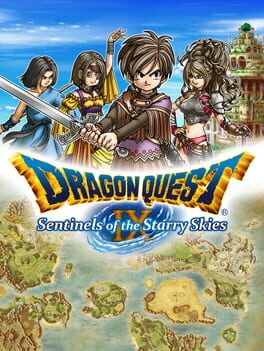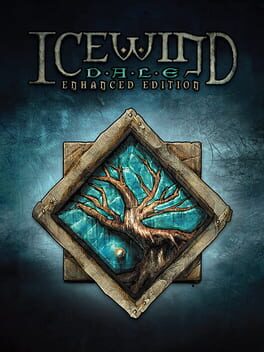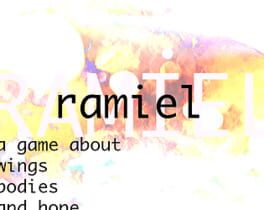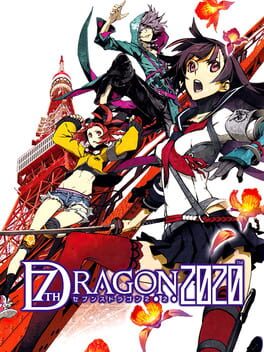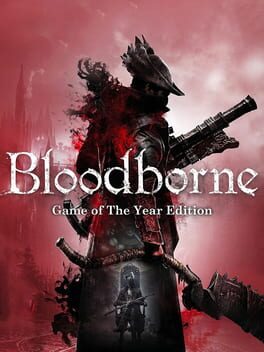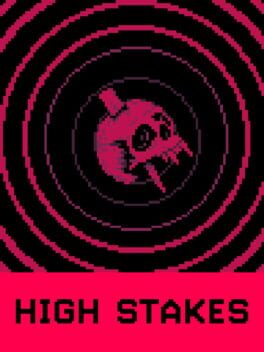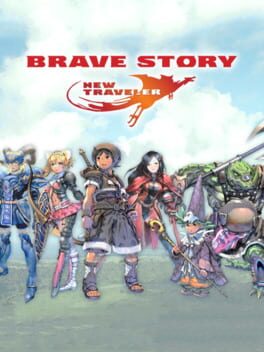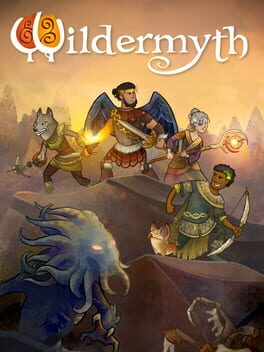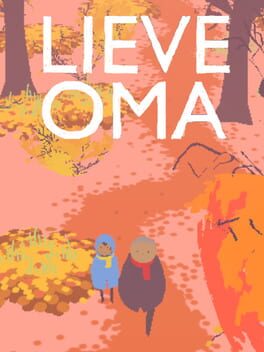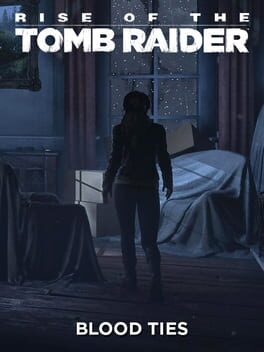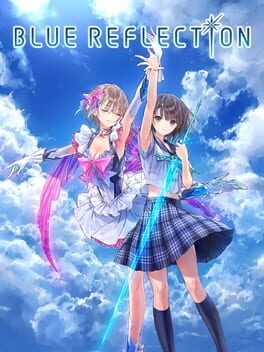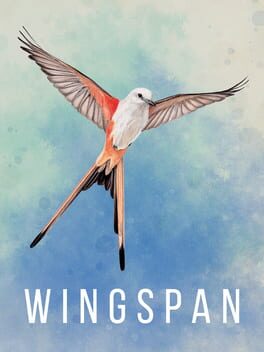AlexaLily
To some degree, I don't know what I expected. It's a Dragon Quest game. Of course it's going to have pretty basic turn-based combat, a straightforward job and skill system, a generic storyline, and the same art style this entire series has. But there's always a part of me that goes into a game, regardless of what it is, thinking that maybe this'll have something special in it. Maybe it'll just be a lil nugget of an idea but there's at least something for me to latch on to and obsessively point at and exclaim "No! No, you don't get it! This is secretly really good!". But Dragon Quest IX seems to be sorely lacking in that "something special" department. I'm sure playing this on emulator and completely missing out on the various online features (co-op play, doing dungeons with people, whatever else there is there) makes for an incomplete experience but, if I'm being honest here, I don't think I would've messed around with those much had they actually been available. I'm just not much of a multiplayer gamer these days.
I need to talk about how miserable grinding in this game is but I don't want to get too long-winded and mechanics-dense, please bear with me, I will do my best here. The game expects you to grind. A lot. This isn't an inherently bad thing but it was a bit of surprise because I've always felt that this era of RPG is around when developers started making games that could be constantly progressed through and generally allowed for, but didn't require, grinding. But, see, this is a Dragon Quest game. So Metal Slimes exist and, in this game at least, are the objectively correct and most optimal way to grind. But the best way that I found to farm Metal Slimes is to use Metal Slash, a sword skill. So before I even got to the part of the game where I could figure that point out, I had already specced my characters into different weapons and had to spend time specifically speccing them differently so that I could be able to do the farming the game expected of me. (This is in addition to me, foolishly, having one of my characters put a significant chunk of their skillpoints into the Shield skill, which is borderline useless, before I had a strong grasp of how the skills and jobs worked.) So the game requires you to grind and funnels you into grinding in a specific way that restricts your character builds... but also because of how the jobs work it means all your characters are going to end up with the same stat bonuses and skills as each other and it really wears away any sort of personality an individual character can have. And as someone who tends to play RPGs more for the characters' stories/arcs rather than the big picture main plot, this was a pretty big disappointment to stack on top of the disappointment I faced when I found out that this game is entirely about custom created collections of stats and not having a party of actual characters to adventure with.
All that said, I did play this game for nearly 82 hours so if nothing else this game did wonders for my podcast backlog - listening to people talk about video games or books or whatever while grinding metal slimes.
And, once again, this is a Dragon Quest game so, to some degree, what the hell was I expecting. But. This game continues the franchise's long storied tradition of being Weird about women. And the ways in which it objectifies women is just so boring. Like, damn, this is all y'all got? Really? "What if a woman wore a bikini!!! OOOOO [eyeballs telescope out of skull, stomps feet on the ground, lights a stick of dynamite in mouth like a cigar, smacks myself over the head with a large mallet, all while a loud AWOOOGA sound effect plays]"
Rest in piss Koichi Sugiyama, you were a piece of garbage and your music wasn't even very good, this game's OST is mid at best.
I need to talk about how miserable grinding in this game is but I don't want to get too long-winded and mechanics-dense, please bear with me, I will do my best here. The game expects you to grind. A lot. This isn't an inherently bad thing but it was a bit of surprise because I've always felt that this era of RPG is around when developers started making games that could be constantly progressed through and generally allowed for, but didn't require, grinding. But, see, this is a Dragon Quest game. So Metal Slimes exist and, in this game at least, are the objectively correct and most optimal way to grind. But the best way that I found to farm Metal Slimes is to use Metal Slash, a sword skill. So before I even got to the part of the game where I could figure that point out, I had already specced my characters into different weapons and had to spend time specifically speccing them differently so that I could be able to do the farming the game expected of me. (This is in addition to me, foolishly, having one of my characters put a significant chunk of their skillpoints into the Shield skill, which is borderline useless, before I had a strong grasp of how the skills and jobs worked.) So the game requires you to grind and funnels you into grinding in a specific way that restricts your character builds... but also because of how the jobs work it means all your characters are going to end up with the same stat bonuses and skills as each other and it really wears away any sort of personality an individual character can have. And as someone who tends to play RPGs more for the characters' stories/arcs rather than the big picture main plot, this was a pretty big disappointment to stack on top of the disappointment I faced when I found out that this game is entirely about custom created collections of stats and not having a party of actual characters to adventure with.
All that said, I did play this game for nearly 82 hours so if nothing else this game did wonders for my podcast backlog - listening to people talk about video games or books or whatever while grinding metal slimes.
And, once again, this is a Dragon Quest game so, to some degree, what the hell was I expecting. But. This game continues the franchise's long storied tradition of being Weird about women. And the ways in which it objectifies women is just so boring. Like, damn, this is all y'all got? Really? "What if a woman wore a bikini!!! OOOOO [eyeballs telescope out of skull, stomps feet on the ground, lights a stick of dynamite in mouth like a cigar, smacks myself over the head with a large mallet, all while a loud AWOOOGA sound effect plays]"
Rest in piss Koichi Sugiyama, you were a piece of garbage and your music wasn't even very good, this game's OST is mid at best.
I don't want to go too hard on this game because a lot of things I ended up disliking about it are because a lot of the things I found frustrating here are due to it being based on D&D which I think is, largely, the antithesis of fun. So, things like THAC0, or the garbage alignment system, or obtuse/unclear stat systems aren't really Icewind Dale's fault. I can, however, call out how the game doesn't really offer any help if you're unfamiliar with those systems. The vast majority of things in the game don't have tooltips or details to read and the manuals (which don't come with the Steam version! I had to find the GOG version's manual!) don't have anything to help with this either. So, in the frequent case that I was confused about something, the solution was to go google it. I guess the expectation was that back in 2000 you'd either have your 2nd Edition rule book laying around and look it up there or you'd know what forum to go to to find your answer. Don't know how to remove "Chaos" or whatever? Well, too bad. Go look it up. Hope you know where to look! They had the option to put a lot of information in the game itself (both in the initial release and in this Enhanced Edition) and chose not to. It made a tedious experience that much more tedious when I had to frequently alt-tab out of the game to look things up for every other encounter (and not even always find an answer because Icewind Dale seems to be not terribly well-documented, especially compared to other notable CRPGs of the era).
So, with that aside... I still didn't like this very much. It's an immensely tedious game that asks you to constantly wrestle with every bit of tedium and clunkiness and if you manage to do all that you're rewarded with an immensely bland and generic narrative. I found large swathes of this game to be actively unenjoyable and unfun.
The way combat is seemingly supposed to work in this game is that you engage a group of enemies, they wipe the floor with you, and you load the game to figure out what the best approach for your particular party is. At first, I was okay with this. Combat was a series of fun puzzles to try and solve and once you get a wide enough array of tools at your disposal, it starts to become easier to deal with all the things the game can throw at you. But after hours and hours of saving and loading for just about every encounter, it really wore me down. It's just a tiresome loop to put up with for the thirty-ish hours it took to get through the game. On top of that, I found a lot of the encounter design to be very lacking. It seemed like there were largely two types of encounters here: a massive mob of simple enemies or a smaller group of enemies that have some more difficult aspect to them (resistances to particular damage types or strong spells, things like that). Occasionally, they throw a third type at you: a large mob of simple enemies that also have some stronger enemies behind them. It is, again, fine at first but becomes pretty boring when maps are just the same couple encounters repeated a dozen or so times.
Something that makes all that worse is that this game is clunky. I like to think that I'm pretty willing to put up with a lot of Old Game Jank and will cut older games a lot of slack when they don't have all the smooth sleek experiences of modern games but Icewind Dale really tested my patience in that regard. It feels like every way this UI/UX could be clunky, it is. Managing your inventory, casting spells, even just moving your characters around. The pathing AI was a pretty major source of frustration for me because it meant that I was constantly pausing in combat to micromanage each party member's movements but it felt like it hardly mattered because sometimes their AI routine would wrest control away from me and go do their own thing or other times they'd get inexplicable stuck on a wall or an ally or on nothing at all and they'd just sort of vibrate in place instead of doing anything useful.
And, hey, speaking of those party members, they were a pretty major disappointment for me too! When I saw that it gives you a full party of six pre-generated characters, I made the assumption that they were Actual Characters with stories and companion quests because that's how the vast majority of CRPGs work. But it turns out that, no, they aren't anything. They're just as empty as your own created character is. They get a little paragraph of backstory but there's no connections to the areas you go to or the people you meet. They don't have any goals or ideals or motivations or anything. This was extra weird to me seeing as the Icewind Dale games are basically a follow-up to the Baldur's Gate games which do a pretty good job of having interesting companion characters. (Side note that, yes, those games are by a different developer but you'd think maybe Black Isle would've taken note of what Baldur's Gate did well and try to put that in their game, y'know?)
And, hey, speaking of disappointing writing, the actual main plot of this game is some of the most empty, vapid, dull, tabletop adventure writing I've ever seen. There are a couple interesting tidbits here or there in this but the vast majority of the narrative is intensely dull. You're a group of adventurers who headed North in search of the vague idea of "adventure" and got caught up in chasing down some evil that plagues a village but the evil is always somewhere else and then, oops! it turns out the evil manipulated you into doing a thing for them and now you have to continue chasing the evil down to have a final confrontation. So much of this feels like they were stretching for time. There's so little actually important events in the story that it feels like they crammed in as much filler as they could to fill out the game.
It's not completely devoid of good ideas but most of what I did have any positive feelings for is buried pretty deep or not really engaged with. I think it's very interesting how this game pretty frequently reminds you that there were lots of people already living in the area before a bunch of humans moved in to start the Ten Towns and that y'all are extremely not welcome here you fuckin' settler scum but then the game doesn't really do anything with that. You can't do much to criticize or push back on the idea that because the Ten Towns exist everyone else just has to be okay with land being stolen out from under them. It almost feels like they stumbled backwards into it on accident and that's why they only sort-of address it. I also liked this small sub-plot about elves and dwarves fighting a war against orc but eventually falling because they were deceived into thinking they were being betrayed by each other. It wasn't anything terribly original or groundbreaking but the way it delivered that narrative by telling you one thing, suggesting the truth via some notes, and then revealing the actual truth later was significantly more interesting than almost anything else in this game.
I found that a lot of this held true for the DLC/expansion Heart of Winter as well. The narrative was nothing special ("hell hath no fury like a woman scorned" except the woman is a dragon) and the encounter design was the same but with ice monsters and yetis and shit. At least that one was short.
The Trials of the Luremaster DLC/expansion though is truly awful. Apparently, they only did this one because people complained that Heart of Winter didn't have enough content to it. And you can tell because a lot of it feels like it was made under duress. So much of the encounter design feels actively hostile to the player and downright mean. Most of the puzzles they ask you to solve are either dead simple things that are barely even puzzles or obtuse bullshit that the game seems to expect you to trial and error your way through. And there's barely any narrative to it, either. I made it about 90% of the way through it before the hard-as-nails encounters wore me down and I quit because absolutely nothing I had seen made me think that last 10% was going to be worth my time. Just some atrocious game design on display here. The only part of this that was remotely amusing was that one character's dialogue is, essentially, saying that adventurers like you are a bunch of greedy assholes who just want to travel to places to loot them for all they're worth.
I didn't particularly enjoy my time with Icewind Dale. I kept expecting to find something about it that I'd like and at least be able to point to and say "the rest of it may be kinda shit but this one part is worth it!" but I never found that.
So, with that aside... I still didn't like this very much. It's an immensely tedious game that asks you to constantly wrestle with every bit of tedium and clunkiness and if you manage to do all that you're rewarded with an immensely bland and generic narrative. I found large swathes of this game to be actively unenjoyable and unfun.
The way combat is seemingly supposed to work in this game is that you engage a group of enemies, they wipe the floor with you, and you load the game to figure out what the best approach for your particular party is. At first, I was okay with this. Combat was a series of fun puzzles to try and solve and once you get a wide enough array of tools at your disposal, it starts to become easier to deal with all the things the game can throw at you. But after hours and hours of saving and loading for just about every encounter, it really wore me down. It's just a tiresome loop to put up with for the thirty-ish hours it took to get through the game. On top of that, I found a lot of the encounter design to be very lacking. It seemed like there were largely two types of encounters here: a massive mob of simple enemies or a smaller group of enemies that have some more difficult aspect to them (resistances to particular damage types or strong spells, things like that). Occasionally, they throw a third type at you: a large mob of simple enemies that also have some stronger enemies behind them. It is, again, fine at first but becomes pretty boring when maps are just the same couple encounters repeated a dozen or so times.
Something that makes all that worse is that this game is clunky. I like to think that I'm pretty willing to put up with a lot of Old Game Jank and will cut older games a lot of slack when they don't have all the smooth sleek experiences of modern games but Icewind Dale really tested my patience in that regard. It feels like every way this UI/UX could be clunky, it is. Managing your inventory, casting spells, even just moving your characters around. The pathing AI was a pretty major source of frustration for me because it meant that I was constantly pausing in combat to micromanage each party member's movements but it felt like it hardly mattered because sometimes their AI routine would wrest control away from me and go do their own thing or other times they'd get inexplicable stuck on a wall or an ally or on nothing at all and they'd just sort of vibrate in place instead of doing anything useful.
And, hey, speaking of those party members, they were a pretty major disappointment for me too! When I saw that it gives you a full party of six pre-generated characters, I made the assumption that they were Actual Characters with stories and companion quests because that's how the vast majority of CRPGs work. But it turns out that, no, they aren't anything. They're just as empty as your own created character is. They get a little paragraph of backstory but there's no connections to the areas you go to or the people you meet. They don't have any goals or ideals or motivations or anything. This was extra weird to me seeing as the Icewind Dale games are basically a follow-up to the Baldur's Gate games which do a pretty good job of having interesting companion characters. (Side note that, yes, those games are by a different developer but you'd think maybe Black Isle would've taken note of what Baldur's Gate did well and try to put that in their game, y'know?)
And, hey, speaking of disappointing writing, the actual main plot of this game is some of the most empty, vapid, dull, tabletop adventure writing I've ever seen. There are a couple interesting tidbits here or there in this but the vast majority of the narrative is intensely dull. You're a group of adventurers who headed North in search of the vague idea of "adventure" and got caught up in chasing down some evil that plagues a village but the evil is always somewhere else and then, oops! it turns out the evil manipulated you into doing a thing for them and now you have to continue chasing the evil down to have a final confrontation. So much of this feels like they were stretching for time. There's so little actually important events in the story that it feels like they crammed in as much filler as they could to fill out the game.
It's not completely devoid of good ideas but most of what I did have any positive feelings for is buried pretty deep or not really engaged with. I think it's very interesting how this game pretty frequently reminds you that there were lots of people already living in the area before a bunch of humans moved in to start the Ten Towns and that y'all are extremely not welcome here you fuckin' settler scum but then the game doesn't really do anything with that. You can't do much to criticize or push back on the idea that because the Ten Towns exist everyone else just has to be okay with land being stolen out from under them. It almost feels like they stumbled backwards into it on accident and that's why they only sort-of address it. I also liked this small sub-plot about elves and dwarves fighting a war against orc but eventually falling because they were deceived into thinking they were being betrayed by each other. It wasn't anything terribly original or groundbreaking but the way it delivered that narrative by telling you one thing, suggesting the truth via some notes, and then revealing the actual truth later was significantly more interesting than almost anything else in this game.
I found that a lot of this held true for the DLC/expansion Heart of Winter as well. The narrative was nothing special ("hell hath no fury like a woman scorned" except the woman is a dragon) and the encounter design was the same but with ice monsters and yetis and shit. At least that one was short.
The Trials of the Luremaster DLC/expansion though is truly awful. Apparently, they only did this one because people complained that Heart of Winter didn't have enough content to it. And you can tell because a lot of it feels like it was made under duress. So much of the encounter design feels actively hostile to the player and downright mean. Most of the puzzles they ask you to solve are either dead simple things that are barely even puzzles or obtuse bullshit that the game seems to expect you to trial and error your way through. And there's barely any narrative to it, either. I made it about 90% of the way through it before the hard-as-nails encounters wore me down and I quit because absolutely nothing I had seen made me think that last 10% was going to be worth my time. Just some atrocious game design on display here. The only part of this that was remotely amusing was that one character's dialogue is, essentially, saying that adventurers like you are a bunch of greedy assholes who just want to travel to places to loot them for all they're worth.
I didn't particularly enjoy my time with Icewind Dale. I kept expecting to find something about it that I'd like and at least be able to point to and say "the rest of it may be kinda shit but this one part is worth it!" but I never found that.
2021
2011
Hey, this game is pretty good! And it has a fully-done fan translation as of about two years ago so it's more accessible than ever.
The combat is pretty simple as it's just your usual turn-based system. The five character classes are all pretty interesting and each have their own mechanic such as the Samurai having two 'stances' that you switch between to change what skills are available or the psychic being your main magic user and having to balance using powerful offensive spells with your heals and recovery spells. The game does offer some challenge in bosses and mini-bosses but it can be pretty easily overcome if you just grind out a handful of levels now and then (which the game makes very easy to do, because of some nice quality-of-life mechanics).
And while we're on the topic of crunchy mechanics, I want to mention the level design in the dungeons because it was pretty consistently very good. It had a lot of interesting moments where what is revealed on your map or what you're able to see with the fixed camera is taken in to account to either try and pull a fast one on your or to tease you about things that you won't get around to until later. It's all very cleverly designed (except for the ice dungeon which just felt cruel and confusing).
And, hey, speaking of design: this game is chock full of good design. I'm pretty ambivalent about the chibi character models but the portraits that go with them are all pretty cool (outside of a few that are a bit too fan-servicey for my tastes). The enemy design were all very cool, although I wish there was a larger variety of things. Seeing the same cool frog get recolored multiple times was a small bummer. The real star here, though, is the environment designs because they really went hogwild with it. Each dungeon has a unique aesthetic that is a part of Tokyo combined with some wild magic nonsense and it's always extremely cool. One of my favorite parts of the game was unlocking a new area so that I could see what it looked like.
The idea that you get to create your characters is neat but I feel like the game needed to either fully commit to more customization or not have it at all. Only getting to pick one of ten portaits, a custom name, plus one of fifteen voices (per gender) doesn't give me much to really play with in terms of making my own characters. Especially when you shove your trio of OCs into the main plot to try and fill the gaping hole where a protagonist would normally go. Since everything has to be written around that hole, it means that your characters basically don't matter. Sure, you're the ones fighting the dragons but anyone with your level of ability could do it and the game is sure to let you know that you're just one group of many that could be doing this (everyone else is either busy or dead, I guess). But also this is one of very few games that let me have a big tiddy milf as a main character so maybe that balances it all out. Who could say.
The main plot itself is pretty milquetoast. Dragons have invaded and it's up to you to unite and defeat them with the power of friendship or whatever. Also you fight god at the end. It's a lot of very common and predictable JRPG tropes shoved together and while it executes on them all pretty well it ends up with something that isn't going to stick in memory for much longer after beating it. The rest of the world, however has some very interesting bits of information that the game has seemingly no interest in actually exploring. Aliens, synthetic humans, secret goverment supersoldiers, plus more, that all get introduced on the fringes of the story but never given much actual detail of. If some of that had even been better incorporated into the plot then it could've been something more engaging but instead it's just a story that is only good enough to keep you going through 'til the end.
One thing I'd me remiss to not mention is that Hatsune Miku is in this game. You save her before she gets eaten by a dragon and then she rewards you with an alternate "Diva Mode" for the soundtrack. The developers got a bunch of vocaloid artists to make Miku remixes of the game's entire soundtrack. At first I thought that was an awesome idea but as I switched back and for between both OSTs I realized that I liked the original one better. Vocaloid music is good but the tracks in this game are just pretty mediocre vocaloid songs. Miku's character model and portrait are very cute though, so that's fun.
Finally, I need to talk about the post-game dungeon. After you roll credits, one of the aliens tells you you need to talk. So after you clean up the last few dragons it unlocks one last dungeon and each bit of progress you make in it rewards you with just a smidge more lore about the dragons and aliens and how they all got here to Earth. At first the dungeon was a neat idea - a mix of all the previous dungeons with only dragon enemies to challenge you with - but after getting halfway through it, it was just too much of a grind for me. The little tidbits of lore weren't worth all the time I was putting in to getting through all these day dragons and doing re-fights with all the bosses of the game. I'm sure I could do it and finish the rest of it off in a few hours but the game has just worn itself out and I wasn't having fun anymore. Whatever happens at the end is extremely unlikely to significantly change how I feel about the game anyway so I don't think I'm missing much there.
Overall, 7th Dragon 2020 is a cool game. It was fun to playthrough and it makes me glad that the fan translation has been completed. It's a little hidden gem of the PSP that I hope more people check out because, despite the issues I have with it, I think it's worth the time to play it.
The combat is pretty simple as it's just your usual turn-based system. The five character classes are all pretty interesting and each have their own mechanic such as the Samurai having two 'stances' that you switch between to change what skills are available or the psychic being your main magic user and having to balance using powerful offensive spells with your heals and recovery spells. The game does offer some challenge in bosses and mini-bosses but it can be pretty easily overcome if you just grind out a handful of levels now and then (which the game makes very easy to do, because of some nice quality-of-life mechanics).
And while we're on the topic of crunchy mechanics, I want to mention the level design in the dungeons because it was pretty consistently very good. It had a lot of interesting moments where what is revealed on your map or what you're able to see with the fixed camera is taken in to account to either try and pull a fast one on your or to tease you about things that you won't get around to until later. It's all very cleverly designed (except for the ice dungeon which just felt cruel and confusing).
And, hey, speaking of design: this game is chock full of good design. I'm pretty ambivalent about the chibi character models but the portraits that go with them are all pretty cool (outside of a few that are a bit too fan-servicey for my tastes). The enemy design were all very cool, although I wish there was a larger variety of things. Seeing the same cool frog get recolored multiple times was a small bummer. The real star here, though, is the environment designs because they really went hogwild with it. Each dungeon has a unique aesthetic that is a part of Tokyo combined with some wild magic nonsense and it's always extremely cool. One of my favorite parts of the game was unlocking a new area so that I could see what it looked like.
The idea that you get to create your characters is neat but I feel like the game needed to either fully commit to more customization or not have it at all. Only getting to pick one of ten portaits, a custom name, plus one of fifteen voices (per gender) doesn't give me much to really play with in terms of making my own characters. Especially when you shove your trio of OCs into the main plot to try and fill the gaping hole where a protagonist would normally go. Since everything has to be written around that hole, it means that your characters basically don't matter. Sure, you're the ones fighting the dragons but anyone with your level of ability could do it and the game is sure to let you know that you're just one group of many that could be doing this (everyone else is either busy or dead, I guess). But also this is one of very few games that let me have a big tiddy milf as a main character so maybe that balances it all out. Who could say.
The main plot itself is pretty milquetoast. Dragons have invaded and it's up to you to unite and defeat them with the power of friendship or whatever. Also you fight god at the end. It's a lot of very common and predictable JRPG tropes shoved together and while it executes on them all pretty well it ends up with something that isn't going to stick in memory for much longer after beating it. The rest of the world, however has some very interesting bits of information that the game has seemingly no interest in actually exploring. Aliens, synthetic humans, secret goverment supersoldiers, plus more, that all get introduced on the fringes of the story but never given much actual detail of. If some of that had even been better incorporated into the plot then it could've been something more engaging but instead it's just a story that is only good enough to keep you going through 'til the end.
One thing I'd me remiss to not mention is that Hatsune Miku is in this game. You save her before she gets eaten by a dragon and then she rewards you with an alternate "Diva Mode" for the soundtrack. The developers got a bunch of vocaloid artists to make Miku remixes of the game's entire soundtrack. At first I thought that was an awesome idea but as I switched back and for between both OSTs I realized that I liked the original one better. Vocaloid music is good but the tracks in this game are just pretty mediocre vocaloid songs. Miku's character model and portrait are very cute though, so that's fun.
Finally, I need to talk about the post-game dungeon. After you roll credits, one of the aliens tells you you need to talk. So after you clean up the last few dragons it unlocks one last dungeon and each bit of progress you make in it rewards you with just a smidge more lore about the dragons and aliens and how they all got here to Earth. At first the dungeon was a neat idea - a mix of all the previous dungeons with only dragon enemies to challenge you with - but after getting halfway through it, it was just too much of a grind for me. The little tidbits of lore weren't worth all the time I was putting in to getting through all these day dragons and doing re-fights with all the bosses of the game. I'm sure I could do it and finish the rest of it off in a few hours but the game has just worn itself out and I wasn't having fun anymore. Whatever happens at the end is extremely unlikely to significantly change how I feel about the game anyway so I don't think I'm missing much there.
Overall, 7th Dragon 2020 is a cool game. It was fun to playthrough and it makes me glad that the fan translation has been completed. It's a little hidden gem of the PSP that I hope more people check out because, despite the issues I have with it, I think it's worth the time to play it.
2020
The base idea here is solid. "Eat small things to get bigger so you can eat bigger things" is a tried-and-true idea that has stood the test of time. I just wish I liked anything else about this. I think it feels kinda bad to control, the ui isn't terribly intuitive, it's not always clear where to go, and the ending felt a bit nonsensical. Maybe the most tragic thing is that the art didn't really do anything for me. It's trying to be a little bit gross and weird but it just doesn't land for me. It's not gross in a repulsive way like Binding of Isaac is and it's not gross in an interesting way like Nidhogg 2 is. It somehow manages to be a very bland type of gross. Oh, that fish has a human face? Yeah I played Seaman, that's nothing new.
But all that said: it's free and there's certainly worse ways to spend ten minutes, so maybe just give it a shot anyway.
But all that said: it's free and there's certainly worse ways to spend ten minutes, so maybe just give it a shot anyway.
What is there to say about Bloodborne that hasn't already been said? So much has been said about this game I feel like I agree with nearly all of it. It's a game where the modern FromSoft formula had been solidified but they still wanted to experiment with it and see what they could play with while still holding onto what makes a FromSoft game a FromSoft game.
A couple of notes before I get into it: my previous 'Souls-like' experience is the Dark Souls trilogy and Code Vein but not much else. I made sure to get the secret ending. I beat all the base game bosses and three of the five DLC bosses. This review doesn't have much coherent flow to it as it's just a rambling series of thoughts on various bits and pieces of the game. Please enjoy.
One thing I feel like I should note, is that I feel like the difficulty of the game has been somewhat overstated. Or, at the very least, like the talk around it is a bit misleading. This isn't some "oh this game is so easy" proclamation, not at all. Before playing this game, I had been lead to believe that this game was centered around using the gun to parry which, would've been a miserable time for me because I am absolutely terrible at parry timing in every game that has it. But, outside of a few select enemies, you can cruise through the game without ever bothering with parrying. I mostly used the gun for pulling enemies or getting a cheeky 20 extra damage in here or there. So while I thought this game was going to be ludicrously hard for me, it ended up being comparable to any of the Souls games.
One of my favorite parts of modern FromSoft games, and the 'Souls-like' genre as a whole, is the very special sense of exploration I get with these games. It's not just about visiting a new place and seeing what's there, but the specific feeling I get when I can look back and see how an area wraps around on itself or connects to other areas. I build this map in my mind of what it all looks like and how one area connects to another and the moment of realization when I open a new shortcut and figure out where I've just gone back to is unparalleled. It's one of my favorite feelings in games and is one of the biggest reasons I enjoy FromSoft's Souls games. Bloodborne absolutely continues that and while some of the areas felt relatively small, it still delivered time after time.
Something that perplexes me about Bloodborne, though, is how FromSoft looked at their games and decided to un-solve some problems. The first of these things is Blood Vials. I feel like with Dark Souls 2 they had kind of nailed the way limited healing worked. You had your Estus Flask changes that refill endlessly whenever you rest plus consumable healing. It was a good balance. Bloodborne is that but minus the Flask aspect of it so if you ever ended up in a position where you ran out of Blood Vials, then you had to either risk pushing on with no healing or backtrack and farm. And, to me, this sort of FromSoft game isn't about farming. Farming is never the solution. It may be beneficial and you could use it to get a leg up here or there but there never comes a time when you need to go farm something. It was a problem with the various healing grasses in Demon's Souls that they figured out better options for in the Dark Souls games and yet with Bloodborne they went back again. Normally I can look at something like this and see some reason why a developer might make this sort of change even if I disagree with it but in this case it feels like a step backwards for no benefit at all. It doesn't make for any interesting tension and just adds the potential for frustration. Just make the stash in the Hunter's Dream have infinite vials, problem solved. You maintain the limited healing but are never going to force someone to farm for more. A bizarre problem to re-add to the game.
On a related note, the way fast travel works is also a strange step backwards. It's a relatively minor thing, but having to travel to the Hunter's Dream and then to the lantern you want instead of directly from lantern to lantern is a bit tedious. And if you accidentally travel to the wrong place? May god have mercy on your soul.
On another, different, related note, I think there's a particular elegance to the flow of a FromSoft game. You know how I said you never really need to farm? I think it's pretty crucial to the way their games work. As long as you clear an area without losing too many Souls (or Blood Echoes or whatever) then you can probably level up and upgrade your equipment enough to safely move on to the next area without too much trouble. It's an important bit of design work that goes mostly unnoticed until you stop and think about it more.
The way Bloodborne encourages aggression is really fascinating. There's the obvious things they do such as the 'rally' mechanic of regaining a portion of your lost health by attacking after you've been hit or the lack of shields or heavy armor (and the one time you do get a shield, the description is a jab at the idea of blocking). But there are some other, more subtle ways they do it as well. What I found is that with quite a few of the bosses, there are attacks that it's better to move towards the boss rather than to try and back away or dodge out of danger. It's a minor thing but it's a very clever bit of design. They want you to push the attack and to be on the offensive and are looking at each aspect of the game and saying "how can we encourage this particular play style while still allowing people options?" It's very smart game design on their part.
Chalice Dungeons are an interesting idea that I found to be dreadfully boring. I like exploring areas. I like figuring out the weird lore. I like seeing interesting sights. So having a series of dungeons that are the same handful of tiles repeated over and over with little to no reward to them beyond more Blood Echoes is perhaps the most tedious thing they could've done. So even though I only did a few before I tapped out on those, I do hope they iterate on the ideas here in some way in a future game. I will say that I was surprised at how much unique asset work there was in those areas. The enemies, the areas themselves, and the bosses were entirely new from the base game. I was expecting it to be similar to the Depths from Code Vein where it was content from the main path of the game being recycled and remixed into little dungeons. So that at least was a welcome surprise.
Something that I was a bit surprised by was how, about halfway through my playthrough, I felt disappointed by the amount of items in the game and, more specifically, looting items off of enemies. In the Dark Souls games, getting an item drop from an enemy is always interesting. Maybe it's a weapon buff item or maybe it an upgrade material! Maybe it's a consumable item to heal a status ailment or maybe it's a new kind of hat! Sure, most of that stuff just gets thrown in a stash or sold for souls but a thing I like in RPGs is getting loot from stuff. Bloodborne feels like it really pared down the amount and variety of items in a way that makes a lot of logical sense, there is still an illogical part of me that is like "yeah but I like getting two dozen worthless swords".
A note about the DLC: Lady Maria is my wife and we were married atop the Astral Clocktower after she romantically ran me through with her sword and spilled my blood across the floorboards and left me there, bleeding to death.
More seriously, I really enjoyed how the DLC started off with an area that is familiar but also changed and how it plays with your knowledge of the area. My favorite specific example of this is at one point in that opening area, you find the building that is relatively early in the game that has an item on the ground and an old man in a chair that, when you pick up the item, he attacks you. You probably know the one I'm talking about. In the base game, you can go from that building to find a shortcut to a lantern. So when you get there in the DLC, you might think "oh, maybe there's a lantern near here, neat." And the thing is, there is a lantern nearby. But if you take the path that the you would in the base game, there isn't a lantern but instead there's a hunter who really wants to fuck you up. It's a great moment that only comes about because of how memorable the first area is and how the DLC plays with your memories of it.
The DLC definitely had one of my top moments. I got to the Living Failures fight and barely beat them on the first go in a very close fight. So to ride that high into the Lady Maria fight immediately after that felt great. I didn't care about how much she murdered me because it was such a stellar session of gaming to have those fights back to back like that. Incredibly fun pair of fights.
So, that's it. I'm happy to have finally checked this one off my backlog of games after staring at it sitting on my shelf for three or four years now. I'm not sure if I'll ever play it again (I rarely replay games these days) but I'm more than content with my time spent in the world of Yharnam and beyond.
I think this one is a four star game? It's damn close to five, though. Maybe my opinion will change with time as I think back on the game.
A couple of notes before I get into it: my previous 'Souls-like' experience is the Dark Souls trilogy and Code Vein but not much else. I made sure to get the secret ending. I beat all the base game bosses and three of the five DLC bosses. This review doesn't have much coherent flow to it as it's just a rambling series of thoughts on various bits and pieces of the game. Please enjoy.
One thing I feel like I should note, is that I feel like the difficulty of the game has been somewhat overstated. Or, at the very least, like the talk around it is a bit misleading. This isn't some "oh this game is so easy" proclamation, not at all. Before playing this game, I had been lead to believe that this game was centered around using the gun to parry which, would've been a miserable time for me because I am absolutely terrible at parry timing in every game that has it. But, outside of a few select enemies, you can cruise through the game without ever bothering with parrying. I mostly used the gun for pulling enemies or getting a cheeky 20 extra damage in here or there. So while I thought this game was going to be ludicrously hard for me, it ended up being comparable to any of the Souls games.
One of my favorite parts of modern FromSoft games, and the 'Souls-like' genre as a whole, is the very special sense of exploration I get with these games. It's not just about visiting a new place and seeing what's there, but the specific feeling I get when I can look back and see how an area wraps around on itself or connects to other areas. I build this map in my mind of what it all looks like and how one area connects to another and the moment of realization when I open a new shortcut and figure out where I've just gone back to is unparalleled. It's one of my favorite feelings in games and is one of the biggest reasons I enjoy FromSoft's Souls games. Bloodborne absolutely continues that and while some of the areas felt relatively small, it still delivered time after time.
Something that perplexes me about Bloodborne, though, is how FromSoft looked at their games and decided to un-solve some problems. The first of these things is Blood Vials. I feel like with Dark Souls 2 they had kind of nailed the way limited healing worked. You had your Estus Flask changes that refill endlessly whenever you rest plus consumable healing. It was a good balance. Bloodborne is that but minus the Flask aspect of it so if you ever ended up in a position where you ran out of Blood Vials, then you had to either risk pushing on with no healing or backtrack and farm. And, to me, this sort of FromSoft game isn't about farming. Farming is never the solution. It may be beneficial and you could use it to get a leg up here or there but there never comes a time when you need to go farm something. It was a problem with the various healing grasses in Demon's Souls that they figured out better options for in the Dark Souls games and yet with Bloodborne they went back again. Normally I can look at something like this and see some reason why a developer might make this sort of change even if I disagree with it but in this case it feels like a step backwards for no benefit at all. It doesn't make for any interesting tension and just adds the potential for frustration. Just make the stash in the Hunter's Dream have infinite vials, problem solved. You maintain the limited healing but are never going to force someone to farm for more. A bizarre problem to re-add to the game.
On a related note, the way fast travel works is also a strange step backwards. It's a relatively minor thing, but having to travel to the Hunter's Dream and then to the lantern you want instead of directly from lantern to lantern is a bit tedious. And if you accidentally travel to the wrong place? May god have mercy on your soul.
On another, different, related note, I think there's a particular elegance to the flow of a FromSoft game. You know how I said you never really need to farm? I think it's pretty crucial to the way their games work. As long as you clear an area without losing too many Souls (or Blood Echoes or whatever) then you can probably level up and upgrade your equipment enough to safely move on to the next area without too much trouble. It's an important bit of design work that goes mostly unnoticed until you stop and think about it more.
The way Bloodborne encourages aggression is really fascinating. There's the obvious things they do such as the 'rally' mechanic of regaining a portion of your lost health by attacking after you've been hit or the lack of shields or heavy armor (and the one time you do get a shield, the description is a jab at the idea of blocking). But there are some other, more subtle ways they do it as well. What I found is that with quite a few of the bosses, there are attacks that it's better to move towards the boss rather than to try and back away or dodge out of danger. It's a minor thing but it's a very clever bit of design. They want you to push the attack and to be on the offensive and are looking at each aspect of the game and saying "how can we encourage this particular play style while still allowing people options?" It's very smart game design on their part.
Chalice Dungeons are an interesting idea that I found to be dreadfully boring. I like exploring areas. I like figuring out the weird lore. I like seeing interesting sights. So having a series of dungeons that are the same handful of tiles repeated over and over with little to no reward to them beyond more Blood Echoes is perhaps the most tedious thing they could've done. So even though I only did a few before I tapped out on those, I do hope they iterate on the ideas here in some way in a future game. I will say that I was surprised at how much unique asset work there was in those areas. The enemies, the areas themselves, and the bosses were entirely new from the base game. I was expecting it to be similar to the Depths from Code Vein where it was content from the main path of the game being recycled and remixed into little dungeons. So that at least was a welcome surprise.
Something that I was a bit surprised by was how, about halfway through my playthrough, I felt disappointed by the amount of items in the game and, more specifically, looting items off of enemies. In the Dark Souls games, getting an item drop from an enemy is always interesting. Maybe it's a weapon buff item or maybe it an upgrade material! Maybe it's a consumable item to heal a status ailment or maybe it's a new kind of hat! Sure, most of that stuff just gets thrown in a stash or sold for souls but a thing I like in RPGs is getting loot from stuff. Bloodborne feels like it really pared down the amount and variety of items in a way that makes a lot of logical sense, there is still an illogical part of me that is like "yeah but I like getting two dozen worthless swords".
A note about the DLC: Lady Maria is my wife and we were married atop the Astral Clocktower after she romantically ran me through with her sword and spilled my blood across the floorboards and left me there, bleeding to death.
More seriously, I really enjoyed how the DLC started off with an area that is familiar but also changed and how it plays with your knowledge of the area. My favorite specific example of this is at one point in that opening area, you find the building that is relatively early in the game that has an item on the ground and an old man in a chair that, when you pick up the item, he attacks you. You probably know the one I'm talking about. In the base game, you can go from that building to find a shortcut to a lantern. So when you get there in the DLC, you might think "oh, maybe there's a lantern near here, neat." And the thing is, there is a lantern nearby. But if you take the path that the you would in the base game, there isn't a lantern but instead there's a hunter who really wants to fuck you up. It's a great moment that only comes about because of how memorable the first area is and how the DLC plays with your memories of it.
The DLC definitely had one of my top moments. I got to the Living Failures fight and barely beat them on the first go in a very close fight. So to ride that high into the Lady Maria fight immediately after that felt great. I didn't care about how much she murdered me because it was such a stellar session of gaming to have those fights back to back like that. Incredibly fun pair of fights.
So, that's it. I'm happy to have finally checked this one off my backlog of games after staring at it sitting on my shelf for three or four years now. I'm not sure if I'll ever play it again (I rarely replay games these days) but I'm more than content with my time spent in the world of Yharnam and beyond.
I think this one is a four star game? It's damn close to five, though. Maybe my opinion will change with time as I think back on the game.
2020
I really like the core idea and would love to see it expanded upon but with this basic game jam version it can be a little frustrating because I had so many rounds that I lost because it came down to a 50/50 guess. When I was able to use the hints to figure out what cards probably were or weren't the vampire it felt great! It just didn't happen often enough to make me want to keep playing.
Brave Story: New Traveler is secretly a very underrated gem of the JRPG genre that is stashed away on a handheld no one uses anymore. It's not revolutionary in any way but it's not trying to be. What it does instead is look at the tropes of the genre and execute on them with extreme quality to the point that every aspect of this game is so solid that it wins over your heart no matter how many games you've played where you save the world via the power of friendship.
Also there's a lizard dad and who wouldn't love to pal around with a big lizard dad.
Also there's a lizard dad and who wouldn't love to pal around with a big lizard dad.
2019
Wildermyth is extremely cool and shows how a game can use procedural generation to craft strong stories and characters. I care more about some of these randomly assembled characters that I do the vast majority of other games. I love Hetty the witch who only says the weirdest things at the most serious times. And Marennen the warrior who constantly jumped into the midst of enemies to defend her wife. Or Pamelle, the human chimera who ended up with a wolf's head and arms, a raven's wings and legs, and a scorpion's tail.
But by the third campaign (out of five), I did start to see a handful of events start to repeat which is when the mechanical structure of the game started to be easier to see. The artifice fell away and I saw how functional each choice can be. And when I started to make each of the three classes largely the same because, even with the levelup skill selections being randomized, you can only make one warrior so different from another. But also, that was after something like 20 hours so maybe it's not so bad.
I also need to mention that I played this in co-op and while that was a really cool thing to get to do, it is extremely janky. Latency causes things to desync fairly regularly, sometimes events get skipped for one person but not the other, the text chat is borderline unusable because of how often it refreshes or clears what you were typing.
This game is so so so cool. I like it a lot. I don't have many issues with it but the issues I have feel pretty glaring. But despite that I still will hold this game dearly in my heart because the moments its produced have been so special.
But by the third campaign (out of five), I did start to see a handful of events start to repeat which is when the mechanical structure of the game started to be easier to see. The artifice fell away and I saw how functional each choice can be. And when I started to make each of the three classes largely the same because, even with the levelup skill selections being randomized, you can only make one warrior so different from another. But also, that was after something like 20 hours so maybe it's not so bad.
I also need to mention that I played this in co-op and while that was a really cool thing to get to do, it is extremely janky. Latency causes things to desync fairly regularly, sometimes events get skipped for one person but not the other, the text chat is borderline unusable because of how often it refreshes or clears what you were typing.
This game is so so so cool. I like it a lot. I don't have many issues with it but the issues I have feel pretty glaring. But despite that I still will hold this game dearly in my heart because the moments its produced have been so special.
2016
lo-fi mushrooming with your granny to vibe/chill to 2016
A delightful little thing. Looks and sounds nice. The writing is sparse but what there is is very well done. A wonderful experience all around.
(This was in the itchio Palestinian Aid bundle as well as the Racial Justice bundle so you probably already own this, as well!)
A delightful little thing. Looks and sounds nice. The writing is sparse but what there is is very well done. A wonderful experience all around.
(This was in the itchio Palestinian Aid bundle as well as the Racial Justice bundle so you probably already own this, as well!)
They really looked at their action-adventure video game and said "Okay but what if it was Gone Home?" and I love that so much. I'm not a Tomb Raider lorehead but this was still fun to run through. I think the writing itself is not 100% there but it's still a well-paced lil story about the Croft family.
It's.. interesting that this seems like a move to try and separate Lara Croft from her family's wealth and history... but also not too much. It really reminds me of of the 2018 Tomb Raider movie where Lara starts off trying to distance herself from her wealthy, privileged life (which I think is cool and they should've committed to) but then at the end she just accepts it anyway. If Tomb Raider gets rebooted again or something, I wish they'd just do away with the whole "hyper-rich family of Egyptologists" because it just comes with way too much baggage.
It's.. interesting that this seems like a move to try and separate Lara Croft from her family's wealth and history... but also not too much. It really reminds me of of the 2018 Tomb Raider movie where Lara starts off trying to distance herself from her wealthy, privileged life (which I think is cool and they should've committed to) but then at the end she just accepts it anyway. If Tomb Raider gets rebooted again or something, I wish they'd just do away with the whole "hyper-rich family of Egyptologists" because it just comes with way too much baggage.
2017
2020
Wingspan is a game that I want to like more than I actually do like it. It's incredibly charming–the art of the birds, all the little sounds, the way the menus move, the factoids about birds you can read, all the aesthetic choices in the UI are all wonderful. But actually playing it feels a little... dull? Not exactly dull but it's a little un-engaging? While the gameplay is satisfying on its own, the biggest problem I have is that you have almost no interaction with the other players. Which, for a board game, I think is a pretty big negative! There's very few card effects that let you interact with the other players and even the ones there are are relatively minimal (and most of them are pretty simple things like "if a player does X then you gain Y"). The deck of card and the dice are shared and so you could potentially maybe strategically take things to try and deny them from other players but that is either not a great strategy or a strategy that goes way over my head because I couldn't really see a way to make it work.
To me, board games are largely about the ways in which the game makes you interact with the people you play with. Maybe you broker alliances or make deals with people or choose to backstab them. But there isn't really any of that to be done here. So it's a little disappointing to go into a board game and then not get the thing I expect out of them. But, hey, at least there's cute birds.
There is one interesting mode, though, where you play against a single AI opponent with a set RNG seed and compete against other players to see who can use the identical setup to score the most possible points. It let's you play the game (fun) and optimize strategy (also fun) so it seems like it's kind of the best way to play.
Did I mention the birds are cute? Because the birds are cute.
To me, board games are largely about the ways in which the game makes you interact with the people you play with. Maybe you broker alliances or make deals with people or choose to backstab them. But there isn't really any of that to be done here. So it's a little disappointing to go into a board game and then not get the thing I expect out of them. But, hey, at least there's cute birds.
There is one interesting mode, though, where you play against a single AI opponent with a set RNG seed and compete against other players to see who can use the identical setup to score the most possible points. It let's you play the game (fun) and optimize strategy (also fun) so it seems like it's kind of the best way to play.
Did I mention the birds are cute? Because the birds are cute.
2016
Cool aesthetic. But sometimes the pieces don't look like they line up. And rotating the columns to see more of the pieces is more clumsy than it should be. But, y'know, sometimes you just want to put some puzzles together.
also, small weird rant here that doesn't matter BUT: this game has a five-point difficulty rating system so you know how hard a given puzzle will be. But none of them are rated at 1 or 2 out of 5. And only three or four (out of several dozen) are rated 3. All the rest are 4s or 5s. What's the point of using a five-point scale if you don't use 40% of the scale!! Just use a three-point scale! Also! The difficulty doesn't matter because the puzzles unlock along a couple linear paths and there's no logic to which are harder than which! So doing a 5 out of 5 difficulty puzzle will frequently unlock a 4 out of 5! So what's even the point of it! It doesn't really matter in the grand scheme of things, it just bothered me and sometimes I need to get that sort of thought out of my head so it stops bothering me.
also, small weird rant here that doesn't matter BUT: this game has a five-point difficulty rating system so you know how hard a given puzzle will be. But none of them are rated at 1 or 2 out of 5. And only three or four (out of several dozen) are rated 3. All the rest are 4s or 5s. What's the point of using a five-point scale if you don't use 40% of the scale!! Just use a three-point scale! Also! The difficulty doesn't matter because the puzzles unlock along a couple linear paths and there's no logic to which are harder than which! So doing a 5 out of 5 difficulty puzzle will frequently unlock a 4 out of 5! So what's even the point of it! It doesn't really matter in the grand scheme of things, it just bothered me and sometimes I need to get that sort of thought out of my head so it stops bothering me.
2009
Sure, the game is glitchy and buggy and crashes and the levels are way too long and there's way too many enemies for what your toolset is and the screenshake makes it hard to see anything and it takes way too long to get to the game's gimmick magic spell gauntlet mechanic but damn is it charming. It's the only game I can think of that starts off as a WWI shooter and becomes a crusade into the depths of vampire hell to free the last dragon and fight multiple demon lords and that's gotta count for something.
